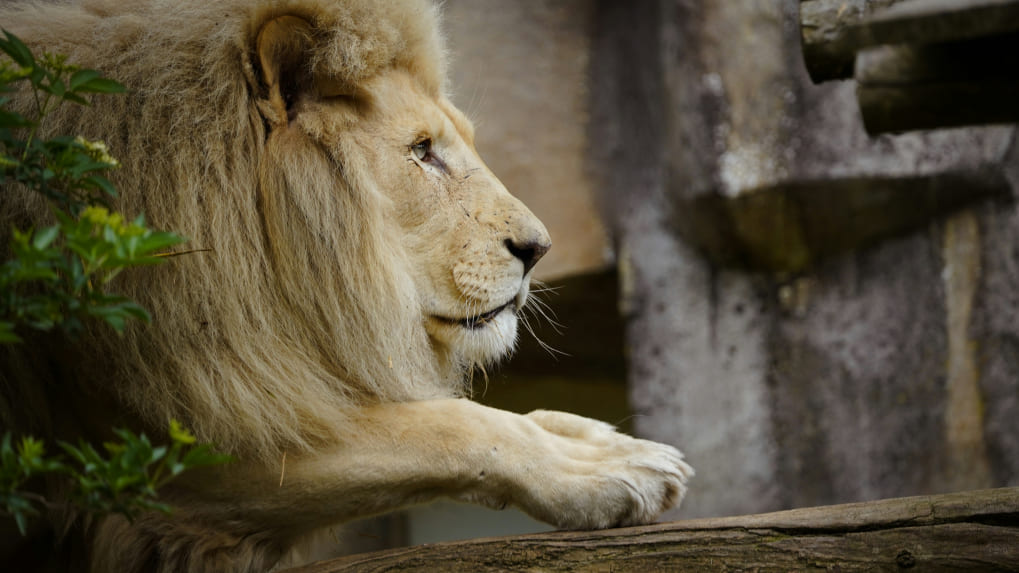
The Majestic Lion: King of the Animal Kingdom
The lion (Panthera leo) has long been regarded as a symbol of strength, courage, and royalty, earning its title as the "King of the Jungle." These iconic big cats are one of the most recognizable and celebrated animals in the world, known for their golden coats, powerful build, and resonant roars. Lions are not just apex predators; they are also highly social animals, making them unique among big cats.
Physical Characteristics
Lions are large carnivorous mammals belonging to the feline family. Male lions are easily distinguished by their impressive manes, which vary in color from blonde to black, depending on age and genetics. The mane not only serves as a display of dominance and maturity but also as protection during fights. Female lions, known as lionesses, lack manes and are slightly smaller than males, but their sleek and muscular bodies are built for hunting and agility.On average, male lions weigh between 150 and 250 kilograms (330 to 550 pounds), while females typically weigh 100 to 180 kilograms (220 to 400 pounds). Lions can grow up to 1.2 meters (4 feet) tall at the shoulder and measure around 2.7 meters (9 feet) in length, including their tails.
Habitat and Range
Historically, lions were found across Africa, Asia, and Europe, but today their range is significantly reduced. Most wild lions live in sub-Saharan Africa, thriving in grasslands, savannas, and open woodlands. A small population of Asiatic lions survives in the Gir Forest of India, where they are critically endangered. Zoos around the world have become crucial for the conservation and study of these magnificent animals.Social Structure: The Pride
Lions are unique among big cats for their social behavior. They live in groups called prides, which typically consist of 10 to 15 members, including related lionesses, their cubs, and a few dominant males. This social structure allows lions to work together for hunting, territory defense, and raising their young.Lionesses are the primary hunters of the pride, using teamwork to take down prey such as zebras, wildebeests, and buffalo. Males, on the other hand, protect the pride from rivals and other threats. Despite their fierce reputation, lions spend up to 20 hours a day resting, conserving energy for their intense hunting efforts.
Hunting and Diet
Lions are apex predators, meaning they are at the top of the food chain. Their diet primarily consists of large herbivores, but they are opportunistic feeders and will scavenge if necessary. Lionesses often hunt in coordinated groups, using stealth and strategy to ambush prey. Once the kill is made, the pride shares the meal, with dominant males eating first.A lion’s roar is a powerful tool for communication, capable of being heard up to 8 kilometers (5 miles) away. This mighty sound serves as a warning to rivals, a signal to pride members, and a declaration of territory.
Conservation Status
Lions face numerous threats in the wild, including habitat loss, human-wildlife conflict, and poaching. Their population has declined by nearly 50% over the past three decades, with fewer than 20,000 lions remaining in the wild. The Asiatic lion is particularly vulnerable, with a population of around 600 individuals confined to the Gir Forest.Zoos and wildlife reserves play a vital role in lion conservation. Through captive breeding programs, education initiatives, and efforts to protect wild habitats, these institutions aim to secure a future for lions both in captivity and in the wild.
Lions in Zoos
In zoos, lions are provided with spacious, enriched habitats that mimic their natural environments. These enclosures often feature open grasslands, shaded areas, and observation points that allow lions to engage in natural behaviors. Zoos also conduct research on lion health, behavior, and genetics, contributing valuable knowledge to conservation efforts.Visitors to zoos are often captivated by the majesty of lions, whether it’s watching cubs play or hearing the deep, resonant roar of an adult male. Beyond their beauty and charisma, lions serve as ambassadors for wildlife conservation, inspiring people to take action to protect the planet's biodiversity.

